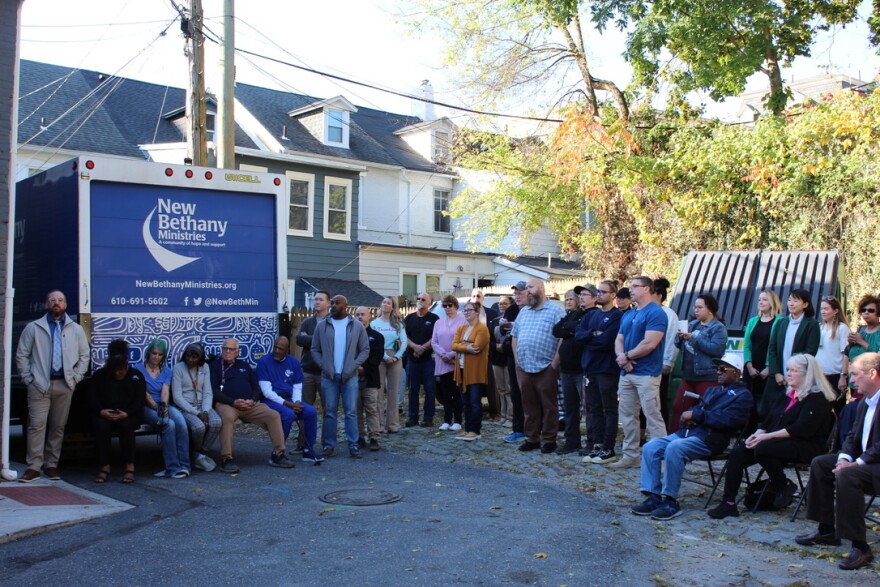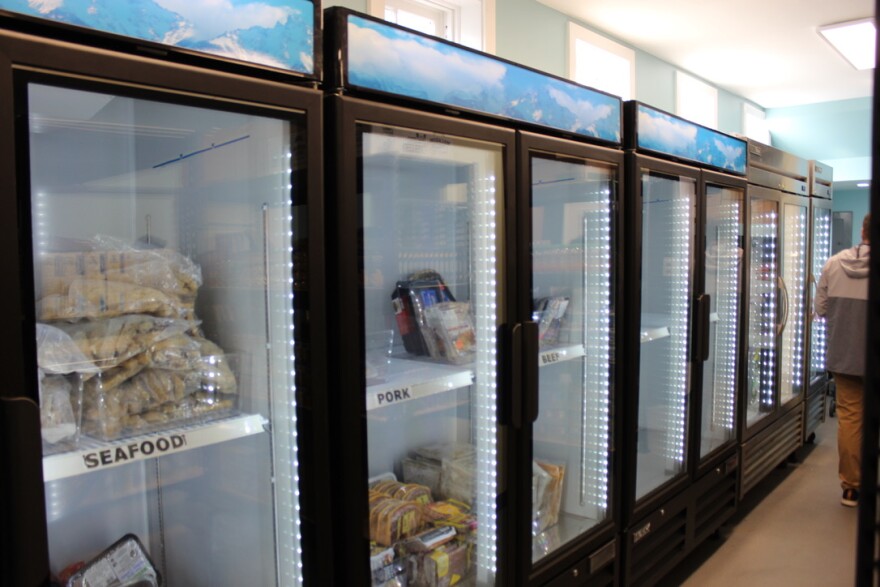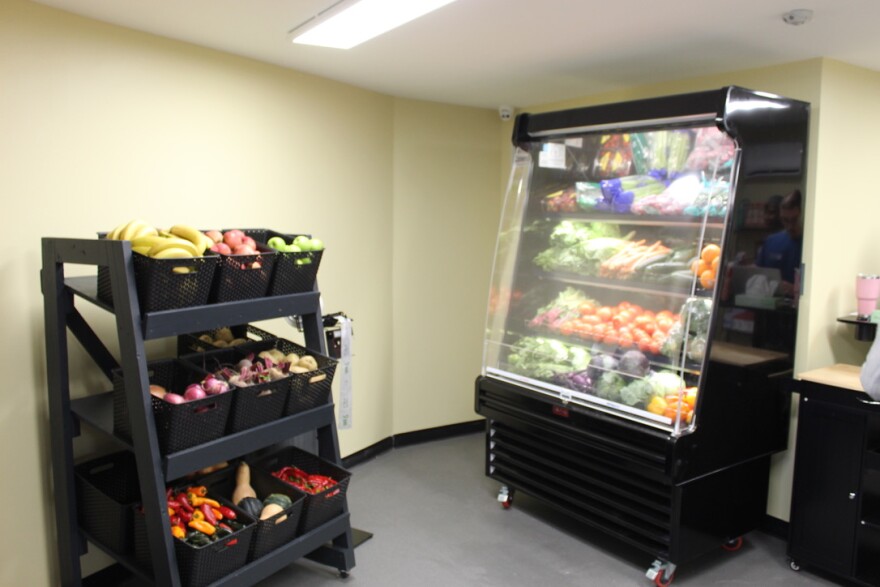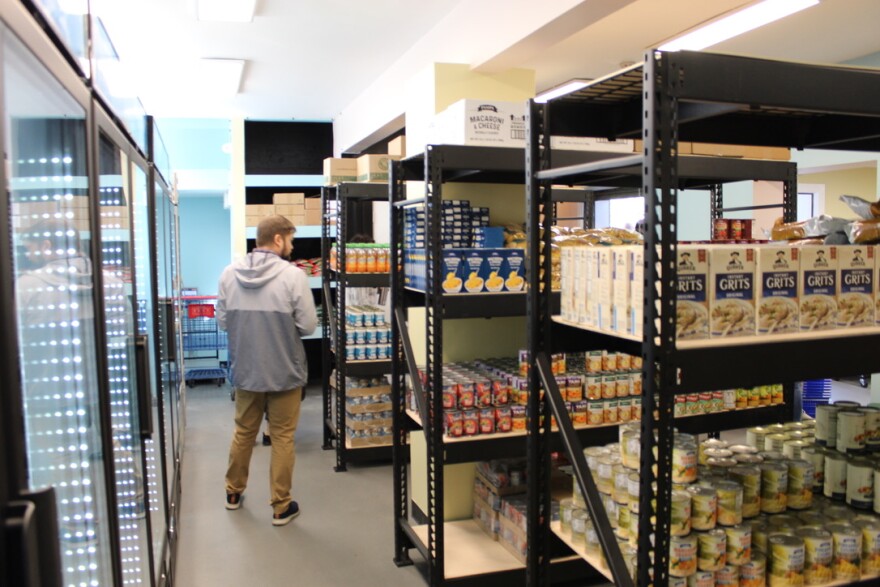BETHLEHEM, Pa. — Two years ago, New Bethany surveyed every person who used its food pantry in an effort to understand unmet needs.
An overwhelming majority of people said they wanted the food pantry to feel more like a grocery store shopping experience.
On Monday, the Bethlehem-based housing support agency reopened its newly renovated Choice Food Pantry with an entirely new feel.
After being under renovation for a year and a half, changes to the space at 380 Shawnee St. included reinforcing the second-story floor, installing a cargo elevator, knocking down walls to improve flow and usable space, and creating a more grocery-shopping-style experience.
Marc Rittle, New Bethany's executive director, said the project cost $130,000 and was funded through grants from national, state, county, and city sources, as well as assistance from local foundations and trusts.
Renovating a space and an experience
Brandy Garofalo, food access director at New Bethany and creator of the survey, said before the renovation project the pantry was more of a grab-and-go style where community members would take a bag pre-packaged with various food.
“It is a very humbling experience for an adult person to express a need like this sometimes, so you want to make it the easiest experience with the most humility that you can foster.”Brandy Garofalo, New Bethany's food access director
With the changes made by renovations, the process of food distribution looks entirely different.
Garofalo said community members will now check in when they enter the pantry and be guided through the space — it now resembles a grocery store — where they are able to choose items from the shelves and refrigerators themselves.
These selected items are carried in shopping carts or hand-held baskets before being bagged up and taken home.

Garofalo said this element of choice allows people to pick food that they actually like and will use.
She also said the stylistic changes to the pantry humanizes what can often be a very difficult situation for food-insecure community members.
“It is a very humbling experience for an adult person to express a need like this sometimes, so you want to make it the easiest experience with the most humility that you can foster,” Garofalo said.
Bill Lohr, facilities director at New Bethany, said every step of the construction was done with the results of the survey in mind. He was committed to creating a grocery shopping experience for pantry users, down to “even the little touches,” he said.
The produce section now includes produce bags and a misting system, frozen items are stored in large double-doored glass display refrigerators, and canned goods and nonperishables are stacked on updated black shelves.
Shopping carts and hand-held baskets are the same as those in any grocery chain and there is even a small faux-neon sign that says “pantry.”
“Everything was just about trying to make sure we still provide a sense of dignity for everybody when they come in,” Lohr said. “I think a lot of people are going to feel a little bit more at home when they grocery shop instead of feeling that they’re just grabbing a bag and making their way back down the street.”
In his time at New Bethany, Lohr said he has developed personal relationships with many clients. He anticipates many pantry users will have very positive reactions to the changes.
“One of my personal favorite clients, he’s become very close to me, he was here over the weekend during the build and he was super emotional. He had tears in his eyes,” Lohr said.
While the feeling of the space was very important, Lohr said the functionality of the space has also significantly improved.

He said there used to be around 550 square feet of usable space in the pantry. By knocking down walls, adding the cargo elevator, and reinforcing the attic, that usable space more than tripled.
In addition to the actual pantry accessible by clients downstairs, the storage upstairs in the now reinforced attic can hold about six times the weight it originally could, increasing in weight capacity from 10,000 pounds to 60,000.
Adapting to address post-pandemic needs
This additional space is crucial to New Bethany as the need for the pantry has significantly increased since the pandemic.
Garofalo said the pantry now serves twice as many people as it did four or five years ago.
“There are a lot of things affecting that like affordable housing and less food stamps, and so it all kind of trickles down to a point when people have to decide how to spend their money.
"I think the demand has gone up because our whole situation changed as Americans.”Brandy Garofalo, New Bethany's food access director
"And when there’s a food pantry in your neighborhood, that kind of offsets the amount of money you spend for rent and other things because you’re spending less for food. I think the demand has gone up because our whole situation changed as Americans,” she said.
New Bethany services include transitional housing, a drop-in meal center and day shelter, and affordable housing for formerly homeless families.
One of the large funders of the pantry renovation project was the Bethlehem Community Recovery Fund Grant Program, a city-run initiative created with money from the American Rescue Plan, a Biden administration COVID-19 relief federal aid plan.

Mayor J. William Reynolds touched on that as the new space was dedicated.
“The idea is that we want to invest into our community, into the systemic inequities that we know we saw during the pandemic," he said.
"The supply chain issues and the pandemic-induced inflation that we’ve been dealing with has been quite a challenge to a lot of our families, and today is about helping people. And that Community Recovery Fund is investing into organizations, investing into all those inequities that were obvious before the pandemic but even more obvious during the pandemic.”
Despite the influx of need at the pantry, Garofalo said, New Bethany is handling the strain.
In her 24 years working at New Bethany, Garofalo said she has never had to turn anyone away and does not plan to anytime soon.


